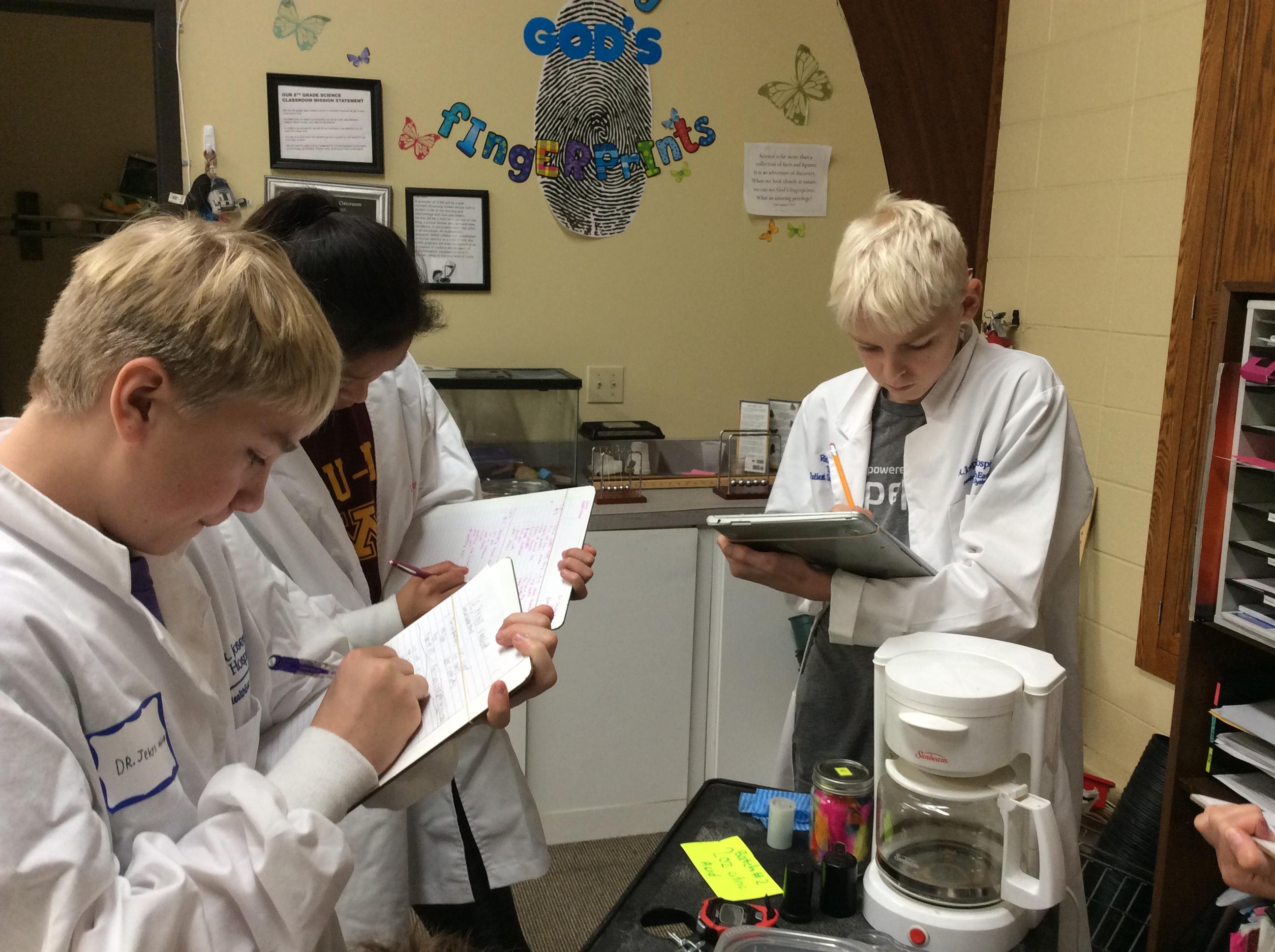What is science? When we think of science, we might picture microscopes, beakers, lab coats, and goggles. Science is a way of knowing and a process of discovery. Science is both a body of knowledge and a systematic way to answer questions about the natural world and universe. The Christian school acknowledges that the study of science is not merely a human endeavor but a process of learning about God as he reveals himself in creation. In the Christian school classroom, teachers help students understand their roles as earth-keepers and creation-enjoyers of all that God has made.
How has the NGSS impacted science instruction? Teachers often feel the challenge of teaching science content from a biblical perspective while implementing best practices that provide opportunities for students to explore, wonder, and discover the complexity of God’s creation. How do standards impact classroom instruction? What is inquiry science? What strategies do teachers use in an inquiry-based science classroom?
The introduction of the A Framework for K–12 Science Education and The Next Generation Science Standards (NGSS) have changed the way that we look at science instruction. The NGSS have identified science practices, cross cutting concepts, and core content that all students should learn by the end of high school. How has the introduction of these documents impacted the teaching of science in a K–12 classroom? Even if we do not adopt the new standards, are there things we can learn from the NGSS?
The Van Andel Education Institute staff answered five key questions that most teachers have about the current shifts in science education.
1. With the Introduction of the NGSS, How Has Science Instruction Changed?
The following conceptual shifts highlight how the introduction of NGSS has changed science instruction:
- Students learn science by doing science.
- New standards are performance expectations. Performance expectations describe what students should know and be able to demonstrate after the completion of a unit.
- Instead of focusing on science facts, students apply content to solve real-world problems.
- Science and engineering practices are integrated within science lessons.
- The NGSS are designed to develop science literacy in all students.
2. What Does Exemplary Science Look Like?
Exemplary science is much more than hands-on learning. Students are building science knowledge, working collaboratively, discovering through questioning, investigating, analyzing, and constructing claims. Exemplary science is inquiry-based science. In an inquiry-based science classroom, students:
- Are answering and asking questions
- Playing a driving role in their learning process
- Making time for reflection and analysis
- Are working harder than the teacher!
3. What Is Inquiry-based Science?
In an inquiry classroom, curiosity, creative thinking, and critical thinking thrive.
Students:
- Actively participate in the practice of learning
- Ask and answer questions that drive the learning process
- Develop meaning through collaboration with teachers, peers, and community
- Freely make mistakes and learn from them
- Apply learning in real-world contexts
Teachers:
- Believe all students can learn
- Design and facilitate learning experiences that promote curiosity, creativity, and critical thinking
- Develop understanding through hands-on discovery
- Connect content to students’ lives, eliciting prior knowledge
- Promote student choice whenever possible
4. What Strategies Do Teachers Use in an Inquiry-based Science Class?
Student choice, encouraging curiosity, and critical thinking are some of the key strategies for promoting a rich learning environment in the inquiry-based science classroom.
Central to the inquiry classroom is student choice. Student choice provides students with opportunities to make decisions that affect their learning. This could include allowing for different variables to be investigated, encouraging a variety of ways that data can be presented, providing different media for journal recording, or supporting different styles for presenting an argument. When students have a choice, they can exercise critical thinking, learn from their mistakes, develop self-direction, and become more engaged and motivated to learn.
All investigations begin with student curiosity. Creating an “I wonder . . .” board, “Curiosity Journal,” or a “Question Wall” encourages students to record questions they have before and following an investigation. These questions are periodically reviewed and discussed by the class and can become the inspiration for future research and investigation.
Creative thinking and critical thinking often work together. Critical thinking is the process of actively evaluating and interpreting ideas. Using infographics, graphic organizers, and sentence stems assists students as they synthesize their learning.
5. What Does It Mean to “Think and Act Like a Scientist?”
Like scientists, students are encouraged to be curious, engaged learners, and persevere to solve problems. The NGSS encourages students to learn science by doing science. In the science classroom, students are taught to think creatively and critically while being open to new ideas. Using goggles, test tubes and microscopes, reading science articles, participating in engineering design challenges and are examples of ways that Phoenix Christian School teacher Amanda Ervin provides opportunities for her students to think and act like scientists. At the end of an investigation, I’ll ask “Is there a way to make this investigation's data more reliable?” Eunsub Cho, teacher at The Potter’s House, asks students to use common scientific language and prior knowledge to formulate follow-up investigation questions. By addressing the process, practices, and culture of scientific inquiry, the science classroom can help students and teachers think and act like scientists.
The following staff from the Van Andel Education Institute (VAEI), CSI’s partners in the Christian School Educators Science Academy (CSESA), contributed to this article: Dawn McCotter, teacher programs manager and technology-based learning specialist, Ben Talsma, learning solution specialist, and Jamie MacPherson, learning solution specialist.

In an inquiry-based classroom, students learn science by doing science.

In the science classroom, students develop understanding through collaboration and hand-on discovery.

The NGSS promotes the implementation of science and engineering practices within the science classroom.

How Today’s Students Learn Science
Learn how you can support science instruction in your school and community at www.nsta.org/ngss.